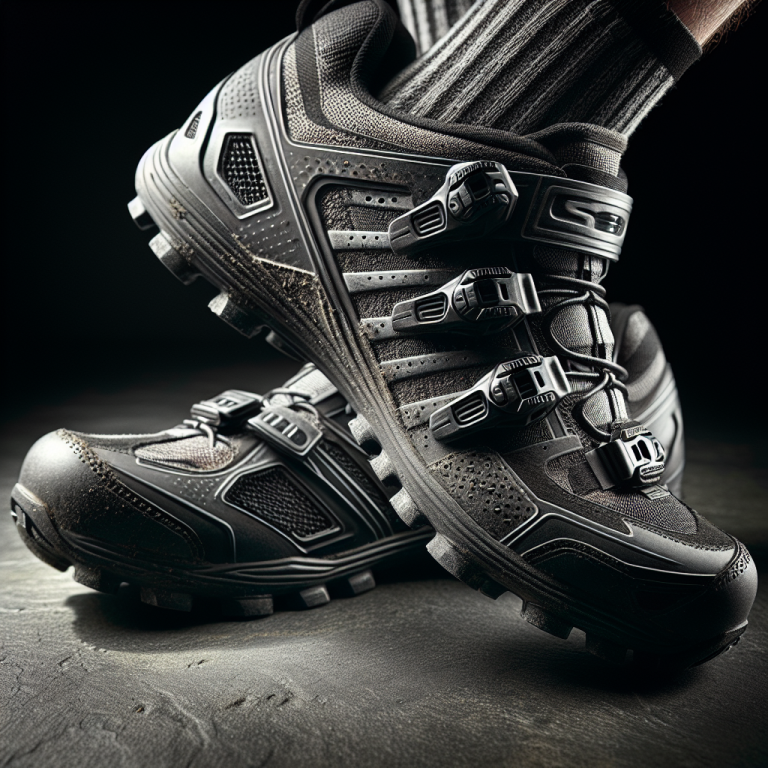Cycling is a beloved pastime and mode of transportation in the UK, and understanding how the country’s weather and terrain vary is crucial for meeting the diverse needs of cyclists. From the blustery hills of the Scottish Highlands to the temperate plains of England, the changing climate and landscape pose unique challenges for cyclists. Whether it’s navigating through heavy rainfall or tackling steep slopes, being prepared for the various weather conditions and terrains becomes essential to ensure a safe and enjoyable cycling experience. So, let’s explore how the UK’s weather and terrain fluctuate and how these factors influence the demands of cyclists.
Table of Contents
ToggleWeather in the UK
The weather in the UK is known for its variability and unpredictability. The country experiences a temperate maritime climate, which means that it has mild winters, cool summers, and high levels of rainfall throughout the year. However, the weather can vary significantly depending on the region, resulting in different climate zones and regional weather patterns.
Climate zones
The UK can be broadly divided into four climate zones: the mild, wet west, the colder east, the uplands in the north and west, and the lowlands in the southeast. These climate zones are influenced by factors such as latitude, proximity to the sea, and prevailing wind patterns.
In the west, particularly in Wales and western Scotland, the weather is characterized by mild temperatures, high levels of rainfall, and strong winds. The east, on the other hand, experiences colder temperatures, less rainfall, and lighter winds. The uplands in the north and west, including the Scottish Highlands and the Lake District, have cooler and wetter weather, while the lowlands in the southeast, which include London, have milder and drier weather.
Regional weather patterns
Within these climate zones, there are also regional variations in the weather. For example, the northwest of England is known for its frequent rainfall, while the east of England experiences drier and sunnier conditions. Scotland, being further north, generally has cooler temperatures and more severe weather, particularly in the higher elevations.
The southwest of England, including Cornwall and Devon, benefits from a milder climate due to its proximity to the Gulf Stream. This results in warmer temperatures and less rainfall compared to other parts of the country. The Midlands, located in the heart of England, experiences relatively stable weather with moderate rainfall and temperatures.
Rainfall variations
Rainfall is a consistent feature of the UK’s weather. The country receives an average of 1,154 millimeters of rainfall per year, with the west and highland regions experiencing higher levels of precipitation. This constant precipitation can pose challenges for cyclists, particularly when it comes to staying dry and maintaining good visibility on the roads.
Temperature variations
The UK’s temperature variations are relatively mild compared to other parts of the world. The average annual temperature ranges from 7 to 13 degrees Celsius. However, temperatures can fluctuate significantly throughout the year, with colder winters and warmer summers.
During the winter months, temperatures can drop below freezing, especially in the upland areas and during cold snaps. Wearing appropriate cold weather gear, such as thermal layers and insulated jackets, is necessary to stay warm and comfortable while cycling in these conditions.
In the summer, temperatures can reach as high as 30 degrees Celsius, particularly in the southeast of England. It is important for cyclists to protect themselves from the sun’s harmful rays by using sunblock and wearing breathable clothing that provides adequate UV protection.
Terrain in the UK
The terrain in the UK is diverse and varied, offering plenty of options for different types of cycling experiences. Whether you prefer mountain biking, coastal cycling, road cycling, or exploring urban landscapes, there are terrains to suit every preference.
Mountainous regions
The UK is home to stunning mountainous regions, such as the Scottish Highlands, Snowdonia in Wales, and the Lake District in England. These areas provide an ideal playground for mountain biking enthusiasts. With their rugged landscapes, steep inclines, and challenging trails, mountain biking in these regions offers adventure, adrenaline, and breathtaking views.
Mountain biking requires a specialized bike with durable tires, suspension systems, and sturdy frames to handle the rough terrain. It is essential to have the necessary skills and experience to navigate the steep inclines and technical descents safely.
Coastal areas
The UK’s extensive coastline offers fantastic opportunities for coastal cycling. From the scenic coastal paths in Dorset and Norfolk to the rugged cliffs of Cornwall and the sandy beaches of Devon, cyclists can enjoy breathtaking views and refreshing coastal breezes.
Coastal cycling requires bikes with good stability and durability to handle the variable terrain, including sandy beaches, gravel paths, and cliffside trails. It is important to be aware of tides and potential hazards such as slippery surfaces, strong winds, and unexpected changes in weather conditions.
Flat landscapes
The UK is not just known for its mountains and coasts; it also has vast areas of flat, low-lying landscapes. The Fens in eastern England, for example, offer wide, open spaces for cyclists to enjoy smooth and fast rides. These flat terrains are perfect for road cycling and allow cyclists to cover long distances with ease.
Road cycling in flat landscapes requires bikes with lightweight frames and aerodynamic designs to maximize speed and efficiency. It is important to be aware of road hazards, such as potholes and traffic, and to follow traffic rules and regulations for safety.
Urban areas
Cities and urban areas in the UK provide a unique cycling experience. With dedicated cycling lanes, bike-sharing schemes, and cycling-friendly infrastructure, more people are opting to cycle as a means of transportation in bustling cities such as London, Manchester, and Edinburgh.
City cycling requires bikes that are agile, maneuverable, and suitable for urban environments. Hybrid bikes or commuter bikes are popular choices for navigating congested city streets. It is important to be mindful of pedestrians, traffic, and potential hazards on the road.
Cycling Needs in Different Weather Conditions
Cycling in the UK’s varied weather conditions requires appropriate gear and preparation to ensure comfort and safety. Here are some considerations for different weather conditions:
Cold weather cycling gear
When cycling in cold weather, layering is essential to maintain warmth and regulate body temperature. Start with a moisture-wicking base layer to keep sweat away from the skin, add a mid-layer for insulation, and finish with a windproof and waterproof outer layer to protect against the elements. Don’t forget gloves, a hat, and warm socks to keep extremities cozy.
Rainproof cycling gear
In a country known for its rain, investing in rainproof cycling gear is crucial. Look for waterproof and breathable jackets, pants, and shoe covers to keep you dry without compromising comfort. Fenders and mudguards can help minimize water splashes and keep your bike clean. Additionally, opt for bright or reflective clothing to enhance visibility in wet weather.
Sun protection
On sunny days, protect yourself from harmful UV rays by applying sunscreen with a high SPF before heading out for a ride. Wear sunglasses to shield your eyes, and consider wearing arm sleeves or lightweight, breathable long sleeve tops to protect your skin from sunburn. It’s also important to stay hydrated and replenish electrolytes regularly when cycling in the heat.
Wind resistance
Windy conditions can affect your cycling speed and overall comfort. Invest in windproof cycling jackets or vests to reduce the impact of strong gusts. Sport sunglasses with effective wind protection can also help prevent eye irritation. Additionally, consider wearing a helmet cover to minimize wind drag and keep your head warm.
Cycling Needs in Different Terrains
Cycling in different terrains requires proper equipment and preparation to ensure a safe and enjoyable ride. Here are some considerations for various terrains:
Mountain biking
When venturing into mountainous regions for thrilling mountain biking experiences, a specialized mountain bike with features like wide, knobby tires, front and rear suspension, and disc brakes is essential. You may also want to invest in protective gear such as a helmet, knee pads, and gloves for added safety. Ensure you have the necessary skills and technique to navigate steep and technical trails.
Coastal cycling
Coastal cycling often involves a mix of terrains, including paved paths, gravel tracks, and sandy beaches. A hybrid bike or a sturdy touring bike with wider tires can handle these variable surfaces. Pay attention to the tides, as some areas may become inaccessible or hazardous during high tide. Ensure your bike is equipped with lights and reflectors for visibility if cycling during low light conditions.
Road cycling
Road cycling usually takes place on paved roads and requires a lightweight, aerodynamic bike with thin tires for increased speed and efficiency. Ensure your bike is fitted with appropriate brakes, gears, and lights for road safety. Pay attention to traffic rules and regulations, and be mindful of road hazards such as potholes, pedestrians, and other vehicles.
City cycling
Navigating urban landscapes requires an agile and versatile bike, such as a hybrid or commuter bike, with good handling and maneuverability. Consider adding accessories like a bell or horn, lights, and a lock to ensure safety and security when parked. Familiarize yourself with cycling routes, dedicated lanes, and junctions to minimize the risks associated with busy city traffic.
Varied Weather Challenges
The UK’s weather is known for its seasonal changes and unpredictable nature. Cyclists need to be prepared for various weather challenges to ensure a safe and enjoyable ride. Here are some things to consider:
Seasonal changes
As the seasons change, so do the weather conditions. Be prepared for temperature fluctuations, changing daylight hours, and potential disruptions caused by extreme weather events. Adjust your clothing, equipment, and cycling habits accordingly to adapt to these seasonal changes.
Unpredictable weather
The UK’s weather can be highly unpredictable even within a single day. It’s not uncommon to experience sudden showers, gusty winds, or unexpected heatwaves. Stay informed about weather forecasts, carry appropriate gear, and be prepared for sudden changes in weather conditions during your ride.
Cycling in extreme weather conditions
While it is generally advisable to avoid cycling in extreme weather conditions such as severe storms or heavy snowfall, some cyclists may choose to embrace the challenge. However, always prioritize safety and carefully assess the risks involved. Ensure you have appropriate gear, including a waterproof and windproof jacket, and be aware of potential hazards such as flooding, icy roads, or falling debris.
Be prepared for sudden weather changes
The UK’s weather can change rapidly, even within a short period. Always carry essential items such as a waterproof jacket, spare layers, and extra bottles of water in case the weather takes an unexpected turn. Monitor the weather forecast throughout your ride and prioritize your safety by seeking shelter if necessary.
Challenges of Different Terrains
Cycling in different terrains presents distinct challenges that cyclists need to be aware of. Here are some considerations for each terrain:
Steep inclines in mountainous regions
Mountainous regions offer exhilarating mountain biking trails but come with the challenge of steep inclines. Be prepared for physically demanding climbs and ensure your bike is equipped with appropriate gears to tackle the gradient. Develop the necessary skills and techniques, such as standing on the pedals and weight distribution, to maintain balance and control on ascents and descents.
Navigating coastal winds
Coastal areas often experience strong winds, which can pose challenges for cyclists. Be prepared for gusty conditions by maintaining a stable and aerodynamic riding position. Be cautious when cycling near cliff edges or in areas prone to crosswinds. Adjusting your route to cycle with the wind at your back can make the ride more enjoyable.
Road hazards and traffic
Road cycling involves sharing the road with other vehicles, which can pose challenges in terms of safety and navigation. Be aware of potential road hazards such as potholes, glass, or debris. Observe traffic rules and stay visible by using appropriate cycling lights and reflective gear. Plan your routes to include dedicated cycling lanes or quieter roads whenever possible.
Navigating urban landscapes
Cycling in urban areas requires negotiating busy streets, pedestrians, and potential hazards such as potholes or uneven road surfaces. Develop good spatial awareness, communicate your intentions with hand signals, and be prepared for sudden changes in traffic flow. Familiarize yourself with local cycling infrastructure and consider joining local cycling groups or organizations for guidance and support.
Benefits of Cycling in Different Weather Conditions
Cycling in different weather conditions offers unique benefits that can enhance your overall cycling experience. Here are some advantages of cycling in various weather conditions:
Cold weather benefits
Cycling in cold weather can invigorate your senses and provide a refreshing escape from indoor environments. Cold weather cycling also offers an opportunity to improve cardiovascular fitness and burn more calories, as the body works harder to stay warm. Layering clothing can provide a cozy and comfortable experience during rides.
Rainy day benefits
While many people prefer to stay indoors on rainy days, cycling can offer a sense of adventure and tranquility. Rainy days often result in fewer crowds on cycling paths or trails, allowing you to enjoy the peace and solitude of nature. Embrace the element of challenge and improve your bike handling skills in wet conditions.
Sunny day benefits
Cycling on sunny days allows you to enjoy the warmth and vitamin D benefits of sunlight. Sunlight has a positive impact on mood and mental well-being, and experiencing the beauty of nature under a blue sky can be invigorating. Just remember to protect yourself from the sun’s harmful rays by using sunblock and wearing appropriate clothing.
Windy day benefits
Cycling on windy days can provide an adrenaline-filled experience and a great opportunity to improve your cycling skills. Battling against headwinds can build strength and endurance, while tailwinds can boost your speed and make for a thrilling ride. Embrace the challenge and enjoy the exhilaration of riding against the wind.
Benefits of Cycling in Different Terrains
Cycling in different terrains offers unique benefits that cater to different preferences and interests. Here are some advantages of cycling in various terrains:
Adventure and adrenaline in mountain biking
Mountain biking offers a thrilling and adrenaline-fueled experience that attracts many cycling enthusiasts. The challenging trails, steep inclines, and technical descents provide an opportunity to push your limits, improve your skills, and enjoy the natural beauty of mountainous regions. Mountain biking can be a great way to experience a sense of adventure and explore lesser-known trails.
Scenic routes in coastal areas
Coastal cycling provides the opportunity to enjoy magnificent sea views, fresh salty air, and tranquil coastal landscapes. Cycling along coastal paths or cliffside trails allows you to discover hidden coves, sandy beaches, and dramatic cliffs. It can be a rejuvenating and visually stunning experience, perfect for those seeking scenic routes and a connection with nature.
Smooth and fast rides on flat landscapes
Flat landscapes offer smooth and fast rides, providing an opportunity for road cyclists to focus on speed and distance. The absence of steep inclines allows riders to maintain a consistent pace and enjoy the rhythm of pedaling. Flat landscapes are also perfect for beginners or those who prefer a more leisurely cycling experience.
Convenience and accessibility in urban areas
Cycling in urban areas offers convenience and accessibility, with dedicated cycling lanes, bike-sharing schemes, and cycling-friendly infrastructure. It provides an eco-friendly and efficient means of transportation, allowing you to navigate through traffic and avoid parking hassles. Cycling in cities also offers the opportunity to explore cultural landmarks, vibrant neighborhoods, and local attractions.
Tips for Cycling in Various Weather Conditions
To make the most of your cycling experience in different weather conditions, here are some helpful tips:
Layer clothing for changing temperatures
To adapt to changing temperatures, layer your clothing so you can adjust your comfort level throughout the ride. Start with a moisture-wicking base layer to keep sweat away from your skin, add insulating mid-layers for warmth, and finish with a windproof and waterproof outer layer to protect against the elements. Remove or add layers as needed to regulate body temperature.
Invest in waterproof gear
Investing in high-quality waterproof cycling gear is essential for staying dry and comfortable during rainy rides. Look for jackets, pants, and shoe covers made from waterproof and breathable materials. Pay attention to the seams and closures, as these should also be waterproof to prevent water from seeping in. Consider using dry bags or waterproof covers to protect electronic devices and other essentials.
Use sun protection
Protect your skin and eyes from the sun’s harmful rays by wearing sunscreen with a high SPF. Apply it generously before heading out for a ride and reapply regularly, especially if you’re sweating. Wear sunglasses to protect your eyes from glare, and consider wearing arm sleeves or lightweight, breathable long sleeve tops to shield your skin from sunburn. Don’t forget to stay hydrated and replenish electrolytes, especially on hot and sunny days.
Ensure proper hydration
In any weather condition, maintaining proper hydration is crucial for performance and well-being. Carry enough water and/or sports drinks to stay hydrated throughout your ride, especially on hot or strenuous rides. Pay attention to your body’s signals and drink before you feel thirsty. Consider using a hydration pack, water bottles, or a combination of both to suit your preferences.
Tips for Cycling in Different Terrains
To make the most of your cycling experience in different terrains, here are some useful tips:
Choose the appropriate bike for the terrain
Select a bike that is suitable for the specific terrain you’ll be cycling on. Mountain biking requires a specialized mountain bike with features like wide, knobby tires, front and rear suspension, and disc brakes. Road cycling is best done on a lightweight, aerodynamic bike with thin tires, while hybrid or commuter bikes are ideal for urban cycling. Choose a bike that matches the terrain and your cycling goals.
Be aware of the specific challenges
Each terrain presents its own set of challenges. Before embarking on a ride, familiarize yourself with the specific challenges of the terrain. Research the gradients, trail conditions, potential hazards, and weather patterns associated with the area. Understanding the terrain will help you plan and prepare accordingly, ensuring a more enjoyable and safer ride.
Plan routes that cater to the terrain
When cycling in different terrains, plan your routes accordingly. Use reliable maps, GPS devices, or cycling apps to find routes that offer the best cycling experience in specific terrains. Look for designated cycling paths, trails, or quieter roads that are suited to your chosen terrain. Consider the distance, elevation, difficulty level, and points of interest when planning your routes.
Consider joining local cycling groups for guidance
Local cycling groups can be a valuable resource for guidance and support when cycling in different terrains. Joining a cycling group or association allows you to tap into the collective knowledge and expertise of experienced cyclists in the area. They can offer advice on the best routes, provide tips for specific terrains, and create opportunities for group rides that cater to your preferences.
In conclusion, the UK’s weather and terrain offer a diverse and exciting range of cycling opportunities. From exploring mountainous regions to coasting along scenic coastal paths, road cycling through flat landscapes, or navigating busy urban areas, there is something to suit every cyclist’s preferences. By being aware of the weather and terrain challenges, investing in the appropriate gear and equipment, and following these tips, you can enhance your cycling experience and make the most of what the UK has to offer. Happy cycling!







